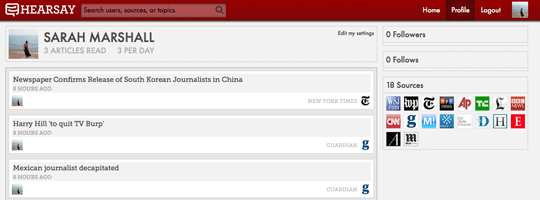Facebook has this afternoon released its own list of the top news stories of 2011.
Yesterday Journalism.co.uk published a list of top 10 Facebook stories. We looked at total numbers of shares, likes and comments (you can find the source data at this link)
Today’s list differs as it is based on the number of clicks each article received after being posted, liked or shared.
It is interesting to compare the “most clicked” and “most shared, liked and commented” lists. Note that recent stories such as the Sun’s “tatt-poo” story did not feature in yesterday’s list as it was published too recently to appear in the Searchmetrics data.
The number of clicks the Guardian has received has no doubt been influenced by its new Facebook app launched on 22 September. Last week Facebook reported the app was delivering an additional one million clicks a day for the Guardian.
Here is Facebook’s list of top news stories published by UK news outlets, which was released at the Le Web conference taking place in Paris.
1. BBC: The World at Seven Billion
2. The Sun: Tatt-poo for cheating
3. The Guardian: The shocking truth about the crackdown on Occupy
4. BBC: Amy Winehouse: Tributes paid to dead singer
5. BBC: Austrian driver allowed ‘pastafarian’ headgear photo
6. The Guardian: Charlie Sheen v Muammar Gaddafi: whose line is it
anyway?
7. The Guardian: The meaning of 9/11’s most controversial photo
8. Daily Mail: Amy Winehouse, 27, found dead at her London flat
after suspected ‘drug overdose’
9. BBC: Drunk Swedish elk found in apple tree near Gothenburg
10. BBC: ‘Brinicle’ ice finger of death filmed in Antarctic
12. The Sun: Frankie Cocozza kicked off X Factor
13. BBC: Japan earthquake: Footage of moment tsunami hit
14. BBC: Osama Bin Laden, al-Qaeda leader, dead – Barack Obama
15. The Guardian: Osama bin Laden corpse photo is fake
16. BBC: Japan earthquake: Tsunami hits north-east
17. BBC: Speed-of-light results under scrutiny at Cern
18. BBC: Arrest over video of ‘racist rant’ on Croydon to Wimbledon
tram
19. Daily Mail: Loyal to the end: Heart-breaking photo shows Navy SEAL’s devoted dog guarding his coffin



















